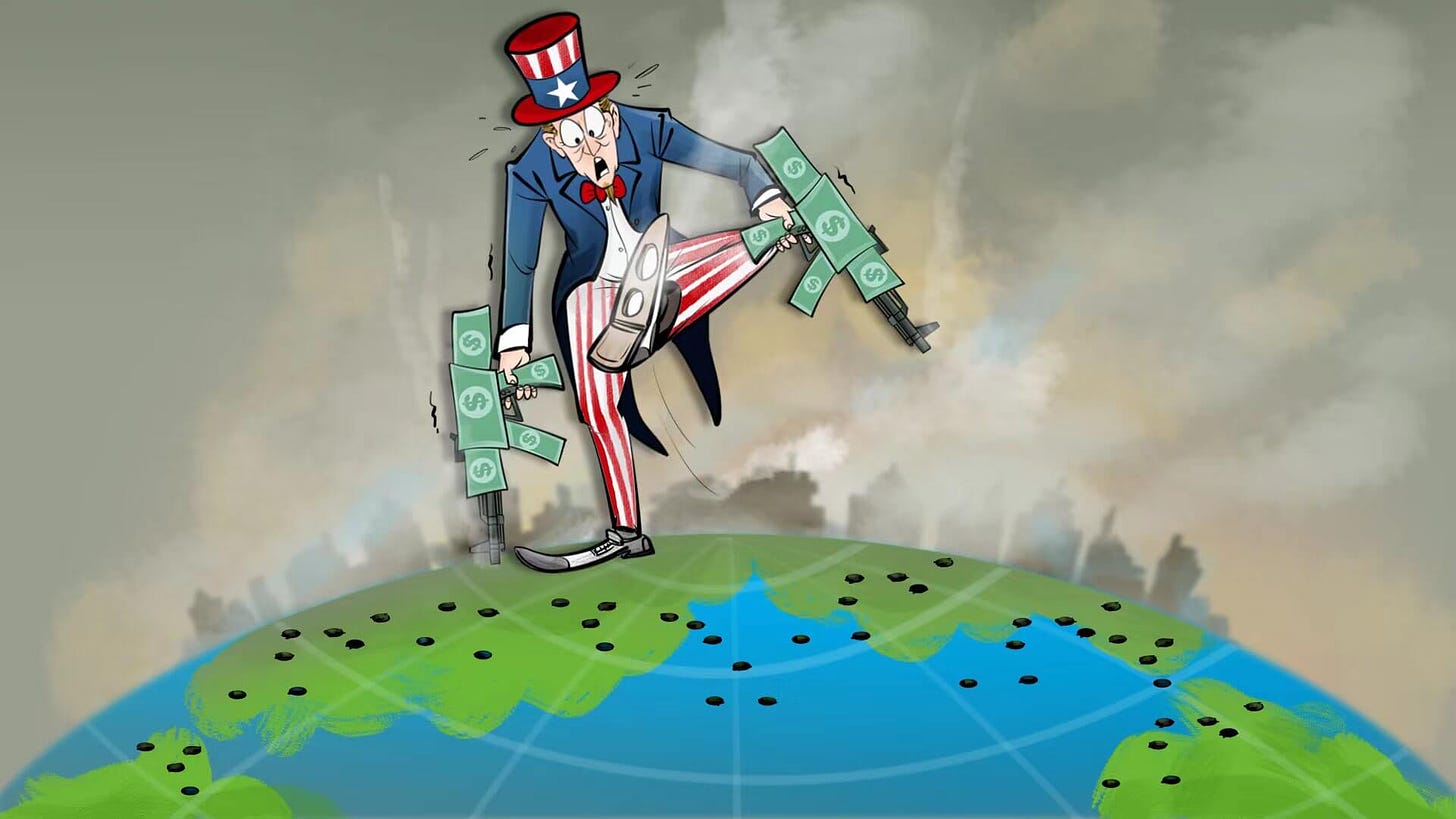Dollar’s Weaponization Favors the Birth of an Alternative Monetary System Centered Around China.
Will this be enough to put an end to the hegemony of the US dollar over the world?
The war between Ukraine and Russia highlights a now obvious reality: currencies have become geopolitical weapons. Vladimir Putin had built what he thought was an impregnable economic and financial fortress around Russia before ordering this attack on Ukraine. He had accumulated reserves of foreign currency, dollars and euros, hoping to use them to support his economy during his offensive in Ukraine.
The Americans and the Europeans have undermined his strategy by deciding to freeze his assets at the time of the application of economic sanctions against the Russian aggressor.
These events will have far greater consequences on the international monetary system than some people can imagine at the moment. The emergence of a new world monetary order with a Bretton Woods III backed by outside money is the most obvious to me.
At the time of writing, about 60% of the central bank's foreign exchange reserves are in dollars, 20% in euros, 6% in yen, 5% in pounds sterling, and less than 3% in renminbi:
The dominance of the US dollar in terms of the international issuing currency for bonds, payment currency, invoicing currency on the commodity markets, or for trade flows is also overwhelming.
Most of the countries that set their exchange rates also do so in relation to the US dollar. There are important synergies between the uses of the US dollar in these various functions. A country whose trade flows are in dollars will find it useful to stabilize its exchange rate in relation to the dollar to limit the risk and transaction costs. Its central bank will therefore have an interest in having reserves in dollars to intervene in support of its currency, and the foreign exchange markets will be liquid for transactions between the local currency and the dollar, which will induce private actors to invest their funds and to issue in dollars.
These complementarities make it costly to deviate from the dollar standard as an international currency.
An isolated actor who decides to do without would find himself cut off from many export payment systems and would face significant exchange rate costs and risks in almost all international transactions. This is why we consider that the current monetary order in which the dollar is sovereign is very stable and has little reason to change.
An alternative monetary system centered around China is emerging
Nevertheless, one can well envisage coalitions of countries, trying to reach a critical size, taking a very geopolitical interest in adopting their currency as an international currency to counteract the influence of the dollar or even the euro. These countries have an interest in coordinating their actions to establish alternative payment systems around existing bilateral trade links and build a parallel financial system to hedge currency risks or to increase market liquidity.
We are seeing just the beginning of the emergence of such an ecosystem around China, which is beginning to open its bond market to foreign investors more broadly. While investments in the renminbi as a reserve currency are dominated by Russian central bank holdings, private investors from the US, Europe, Japan, and Taiwan are becoming increasingly present in the incoming capital flows.
This change was initiated by Beijing, which adjusted its investment quota policy by first allowing the entry of long-term investors and then opening it to other types of investors.
Similarly, the use of the renminbi as a commercial invoice currency has been promoted. In addition, the People's Bank of China is at the forefront of issuing a digital yuan. It is already possible to detect the effects of China's monetary policy on economic activity in Europe and emerging countries.
It is therefore likely that we will move to a multipolar monetary system in the medium term. Will this be enough to put an end to the hegemony of the US dollar over the world? Only time will tell.





